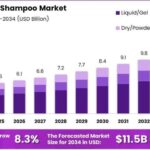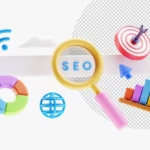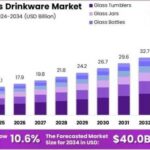As we move deeper into the digital age, product design continues to evolve rapidly—driven by new technologies, shifting consumer expectations, and the urgent need for sustainability. In 2025, product design is no longer just about visual appeal; it’s about crafting intuitive, responsible, and deeply personalized experiences that resonate with users on a meaningful level.
Businesses that invest in cutting-edge design trends will not only attract users but also build long-term brand loyalty. Whether you’re launching a new startup or refreshing a legacy product, keeping up with emerging trends is crucial for success.
Here are the top trends shaping the future of product design this year and beyond:
1. AI-Powered Design Tools
Artificial Intelligence is no longer just a backend tool—it’s transforming the design process itself. In 2025, AI tools assist designers by automating repetitive tasks like resizing elements, suggesting design alternatives based on user behavior, and even writing UX copy.
These tools act as creative collaborators, speeding up workflows and enabling teams to focus on innovation. Generative AI models are now being used to generate complete design systems or visualize wireframes based on rough input. The result? Faster iteration cycles and more refined user interfaces.
2. Hyper-Personalization
The “one-size-fits-all” approach is outdated. Today’s users expect personalized experiences, and product design must keep up. With real-time data, behavioral tracking, and predictive analytics, designers are creating interfaces that dynamically adjust based on individual user preferences, actions, and contexts.
This personalization goes beyond UI—it influences product recommendations, feature prioritization, and even color schemes. It leads to higher engagement, retention, and user satisfaction.
3. Ethical and Inclusive Design
In 2025, ethics and accessibility are foundational pillars in product design. Companies are expected to design products that are inclusive of all users, regardless of physical ability, language, culture, or location.
This means using accessible color palettes, keyboard-friendly navigation, and screen reader compatibility—but also considering bias in algorithms, consent in data usage, and equity in user experience. Ethical design is not just good practice; it’s a business imperative.
4. Sustainable Product Design
Sustainability is influencing both physical and digital product design. From eco-friendly packaging to carbon-conscious UI design (like dark mode), businesses are finding creative ways to reduce their environmental footprint.
Designers now work hand-in-hand with supply chain and engineering teams to ensure material efficiency, recyclable components, and energy-optimized digital products. Sustainability has evolved from a trend to a requirement.
5. Voice and Gesture Interfaces
The way users interact with products is changing. With smart home devices, wearables, and automotive systems gaining popularity, voice and gesture interfaces are becoming mainstream.
Designing for these interfaces requires new UX thinking—focusing on user flow, auditory feedback, intuitive gestures, and context-aware responses. As natural interfaces gain traction, designers must create seamless experiences beyond the screen.
6. Cross-Platform Consistency
Users interact with products across multiple touchpoints—mobile apps, web platforms, smartwatches, tablets, and more. Ensuring visual and functional consistency across platforms is essential to maintaining trust and usability.
Design systems, component libraries, and responsive design practices help unify the brand and user experience across devices. Consistent interactions lead to better usability and brand recognition.
7. DesignOps and Scalable Systems
As design becomes more complex, the need for operational efficiency grows. DesignOps (Design Operations) is a rising discipline focused on optimizing design processes, tools, and team collaboration.
It includes version control for design files, automated handoffs to development, testing integrations, and scalable design systems that ensure consistency without sacrificing speed. In 2025, every high-performing team incorporates some form of DesignOps to stay agile and responsive.
Conclusion
The future of product design in 2025 is human-centered, tech-driven, and sustainability-minded. As users demand smarter, faster, and more ethical experiences, companies must adapt by embracing emerging trends and elevating their design standards.
At Clix Route, we’re not just following trends—we’re helping shape them. Our product design and development services are built around innovation, collaboration, and deep user empathy. We work closely with startups, enterprises, and product teams to turn bold ideas into scalable, high-impact products.
visit us – https://www.clixroute.com/services/design-engineering/
- Top Trends Shaping the Future of Product Design in 2025
- As we move deeper into the digital age, product design continues to evolve rapidly—driven by new technologies, shifting consumer expectations, and the need for sustainability. In 2025, product design is no longer just about aesthetics; it's about crafting intuitive, responsible, and deeply personalized user experiences.
- product design and development
Related posts:
 Essentials Hoodie Design Philosophy: Minimalism Meets Statement
Essentials Hoodie Design Philosophy: Minimalism Meets Statement
 Why the World Is Going Sulfate-Free—One Shampoo Bottle at a Time
Why the World Is Going Sulfate-Free—One Shampoo Bottle at a Time
 The mystery to great connections? Acknowledge family and companions for who they truly are
The mystery to great connections? Acknowledge family and companions for who they truly are
 Alpaca Apparel Market on the Rise: Sustainability Meets Sophistication
Alpaca Apparel Market on the Rise: Sustainability Meets Sophistication
 Designer Drinkware: When Art, Function, and Prestige Collide
Designer Drinkware: When Art, Function, and Prestige Collide
 Mitolyn Review: Mitochondrial Energy Support for Brain, Body & Longevity
Mitolyn Review: Mitochondrial Energy Support for Brain, Body & Longevity
 Get Professional Trading Success Through Advanced Stock Market Classes Offered Only By ICFM India
Get Professional Trading Success Through Advanced Stock Market Classes Offered Only By ICFM India
 Masa Estimating in the USA: Precision, Insights, Trust and Reliability
Masa Estimating in the USA: Precision, Insights, Trust and Reliability







